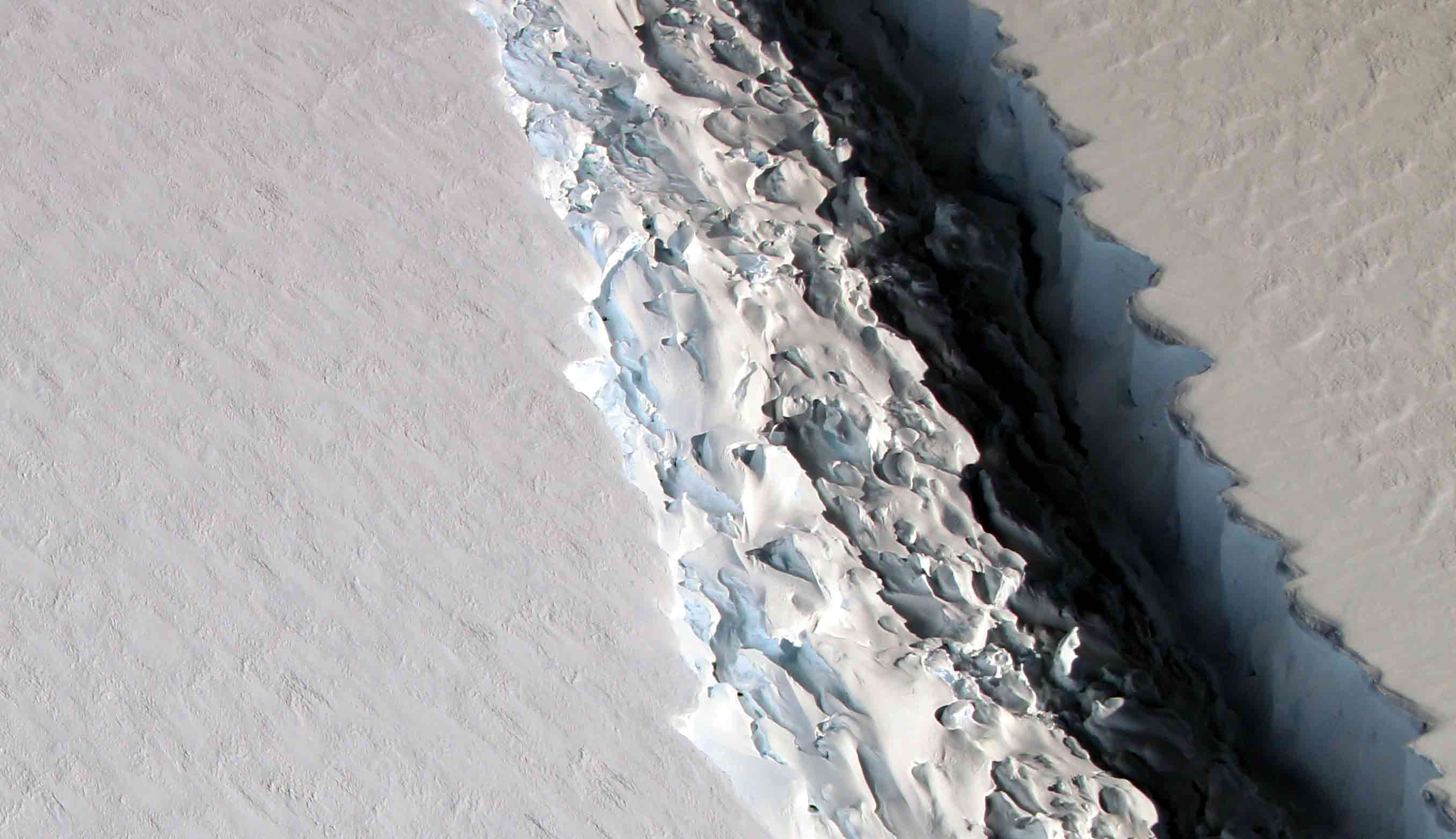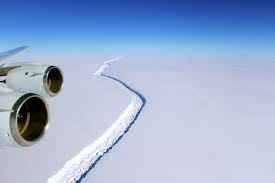Will Larsen C Disintegrate During 2017?

The Detaching Iceberg
The crack in Larsen C runs through the eastern side of the Antarctic Peninsula. If the crack is to spread just 20 km more an iceberg quarter the size of of Wales will break away and melt in the Weddell Sea.
 With the uncertainty surrounding the stability of the region, researchers aren’t able to set up camp as they normally would and instead have to make short visits via plane. Researchers fly the length of the crack which is between 400m and 500m wide in order to measure the status of the potential iceberg.
With the uncertainty surrounding the stability of the region, researchers aren’t able to set up camp as they normally would and instead have to make short visits via plane. Researchers fly the length of the crack which is between 400m and 500m wide in order to measure the status of the potential iceberg.
There is no estimate as to when Larsen C will detach, but it can happen at any time and with its size of 5000 km2 it will be one of the biggest icebergs ever recorded.
Once the Iceberg Detaches
Once the iceberg detaches interest will focus on the remaining structure and how the breakage has had an effect. Will it be able to survive?
Larsen B
Looking back at when Larsen B detached, sea levels rose due to the intense amount of ice melting in the Antarctic Ocean. If Larsen C is to do the same, it will continue through the Antarctic Peninsula, affecting sea levels and having a damaging affect on wildlife.
Disintegrating Icebergs
As well as Larsen A and B disintegrating, many other ice shelves have been destroyed as a result of climate change, including: Wilkins, Larsen Inlet, Wordie and the Prince Gustav Channel, all of which were monitored from space to assess behaviour. These ice shelves often float into the Southern Ocean which causes hazards for shipping.
Many of these icebergs produced in the Antarctic get swept away by currents which eventually take them north towards British overseas territory of South Georgia. There, they get caught by shallow waters and eroded.
Larsen C
Only time will tell if Larsen C is going to disintegrate and we can only hope if the unfortunate is to happen, it does not have a negative effect on the rest of the Larsen.
2EA® are registered Low Carbon Energy Assessors, Consultants and ESOS Lead Assessors, offering both energy management and reduction services ranging from CCL/CHPQA Management to Energy Saving Opportunity Scheme (ESOS) and Carbon Reduction Commitment (CRC) consultancy.
For more information please contact us either by email to info@2ea.co.uk or by calling 01293 521 350.


